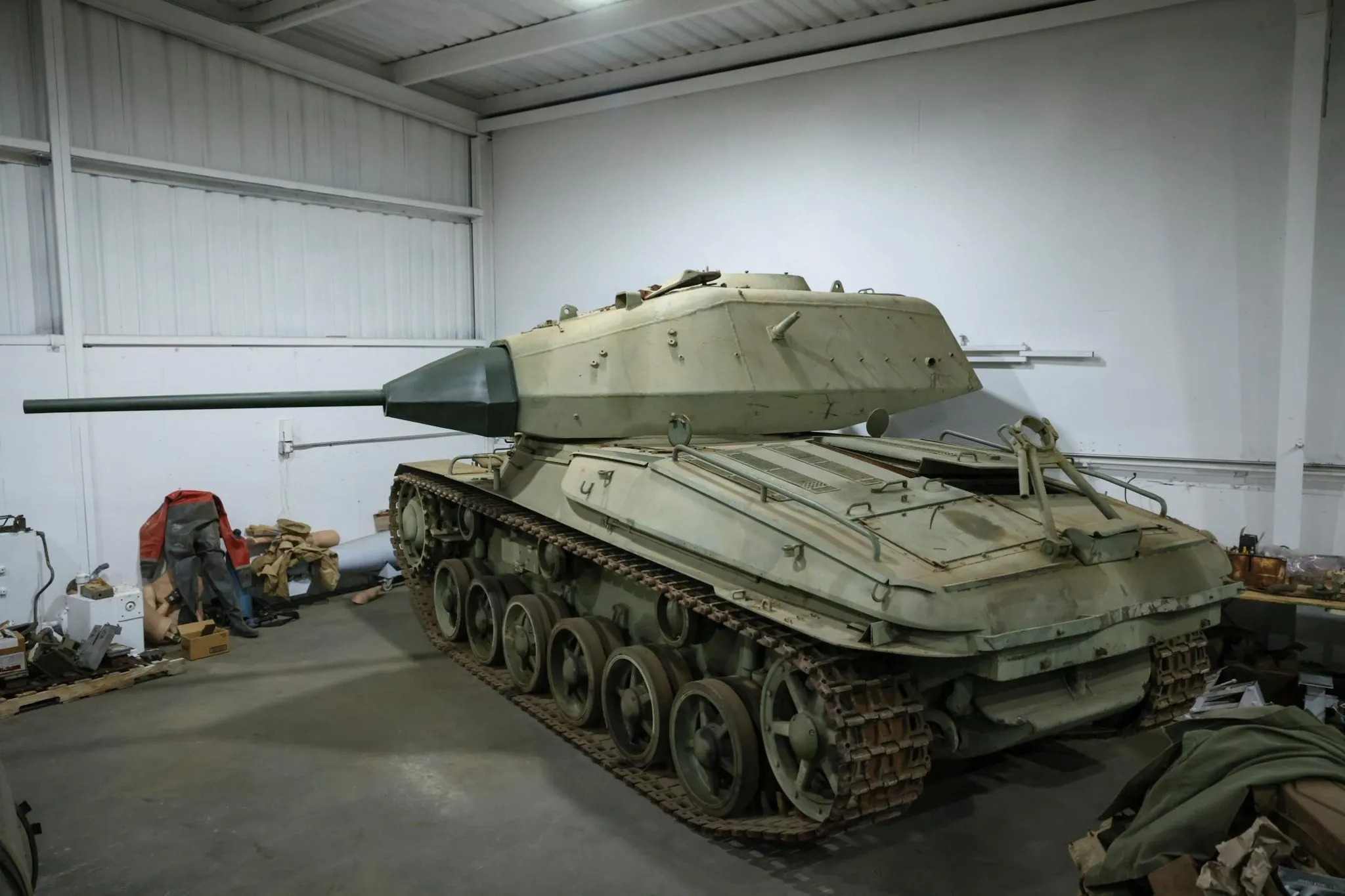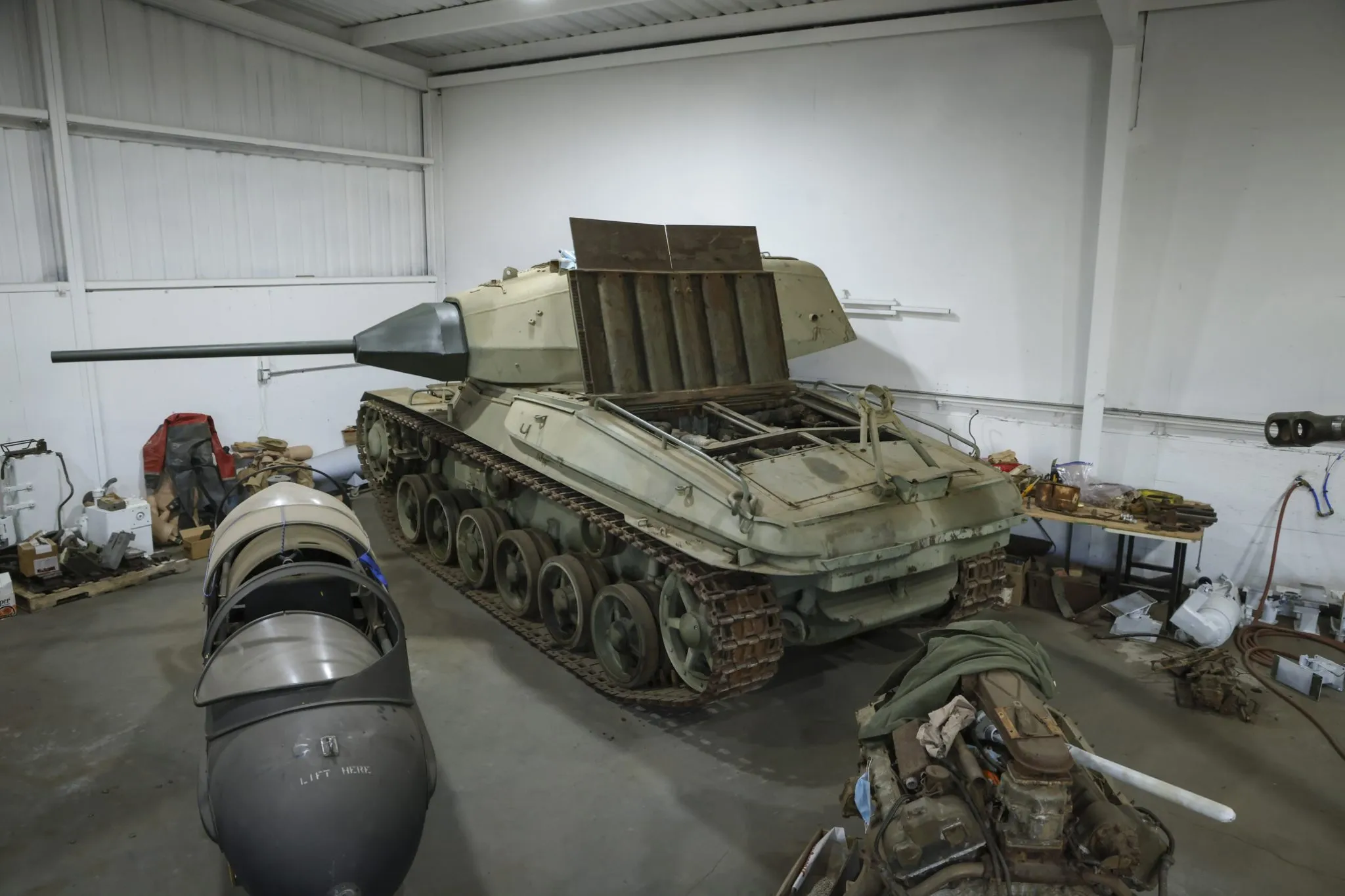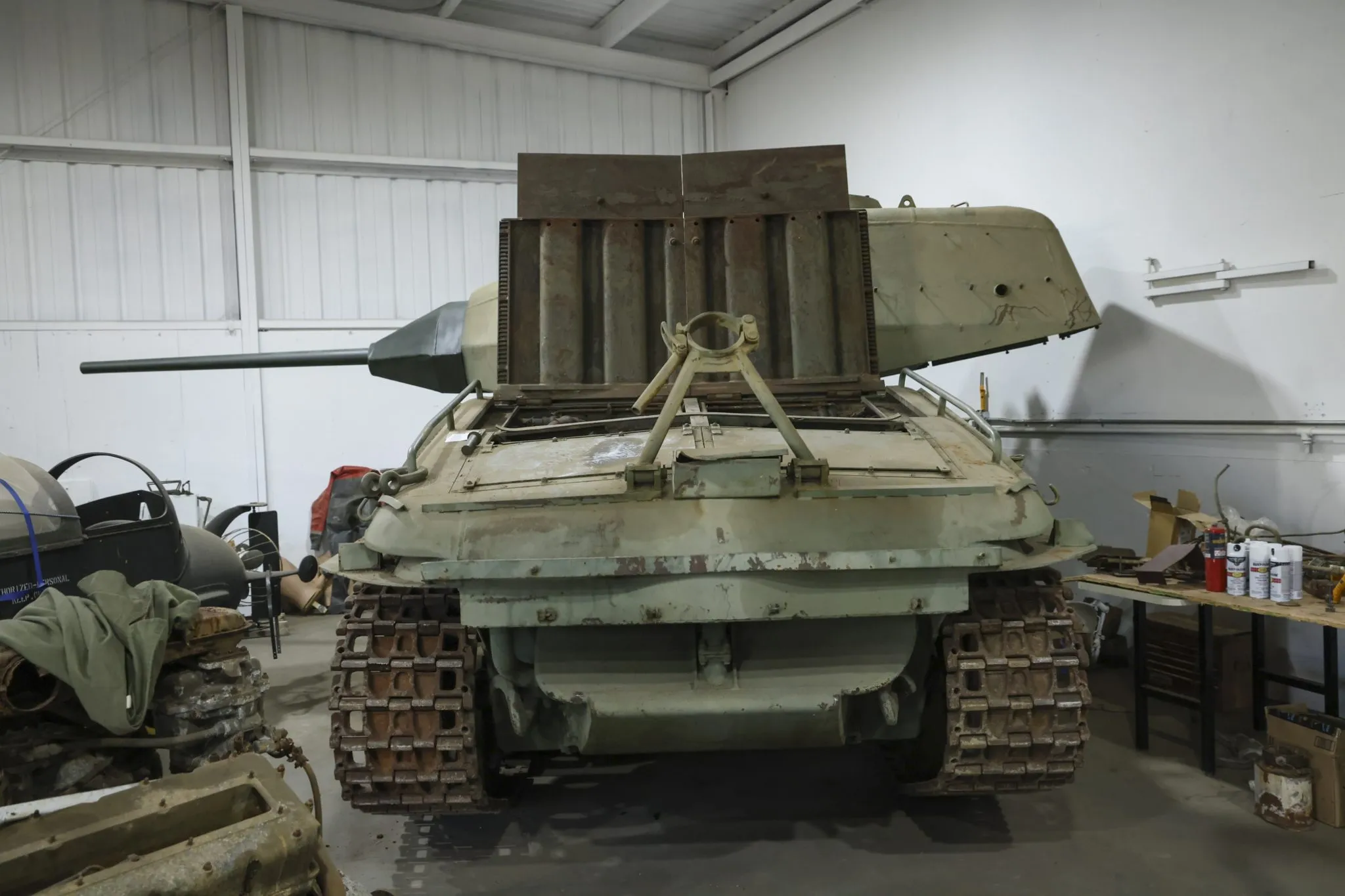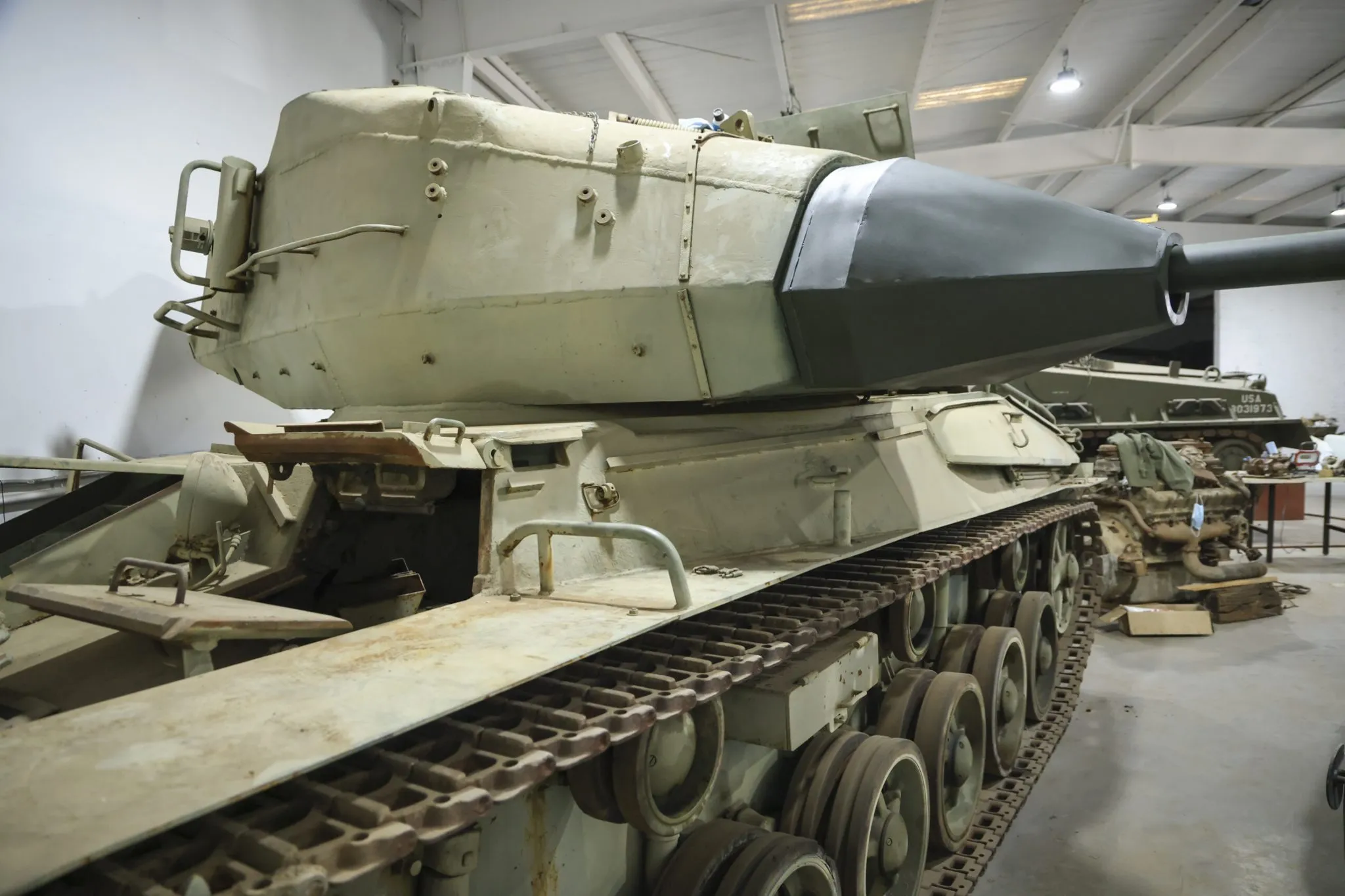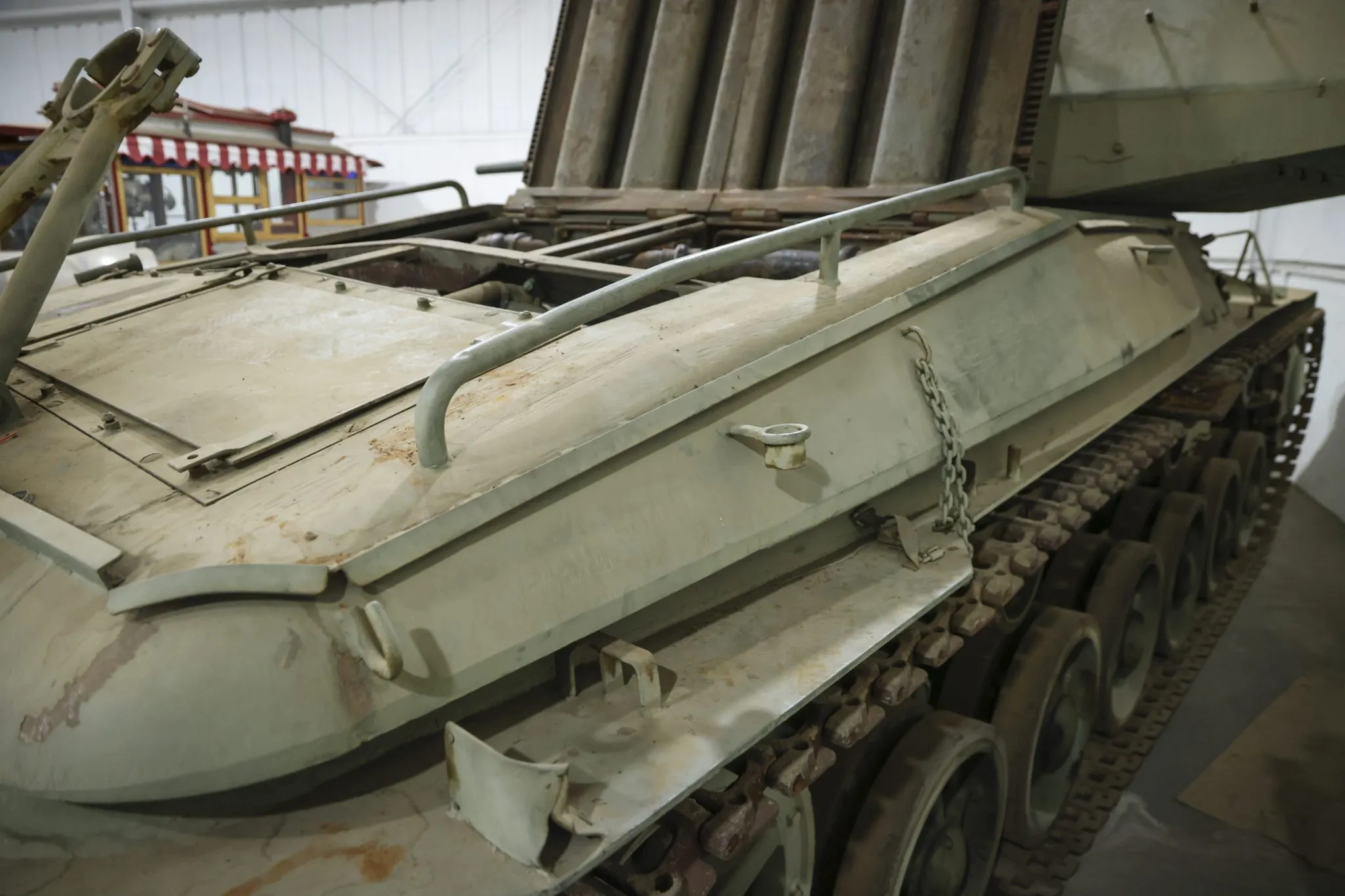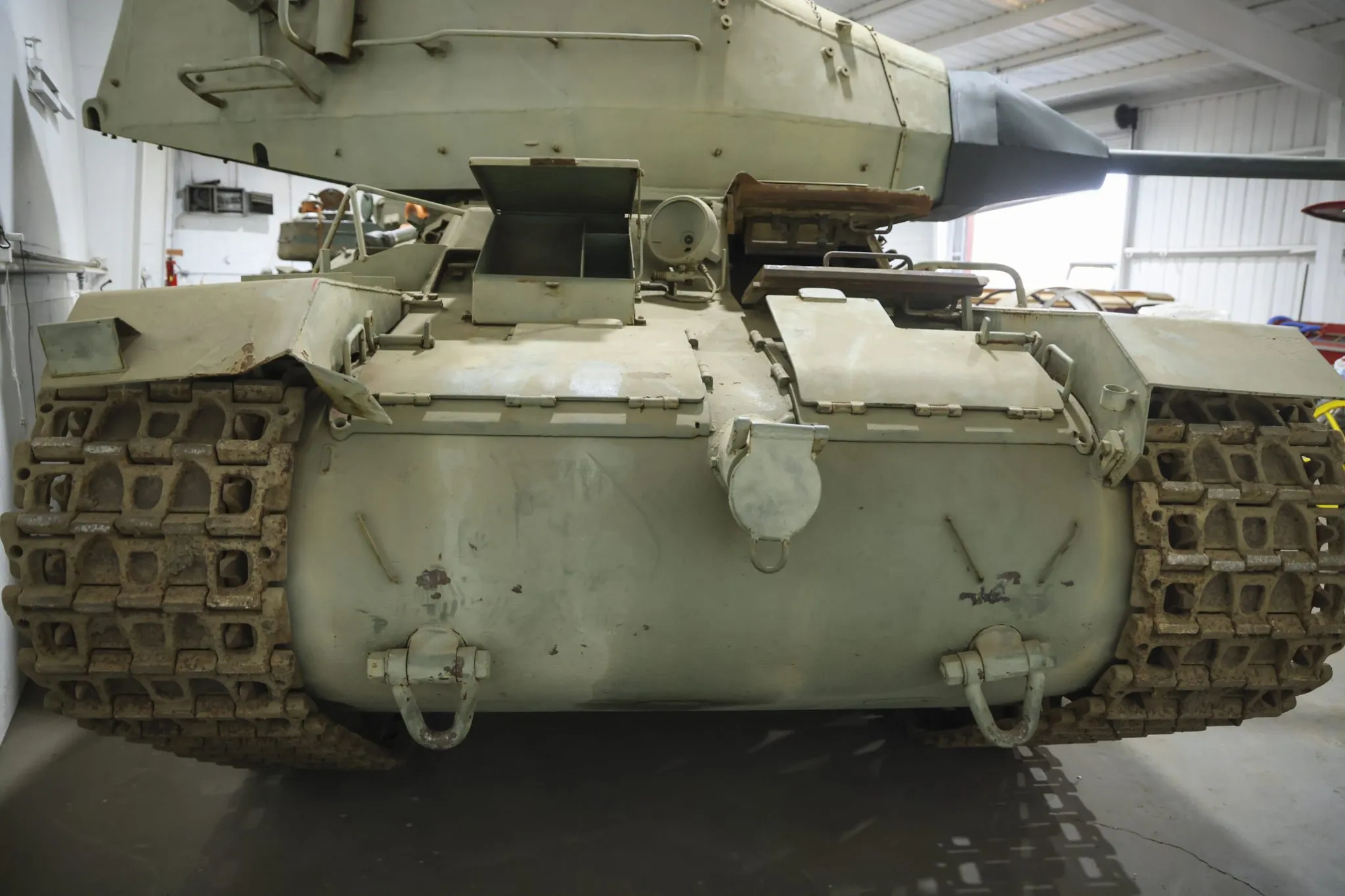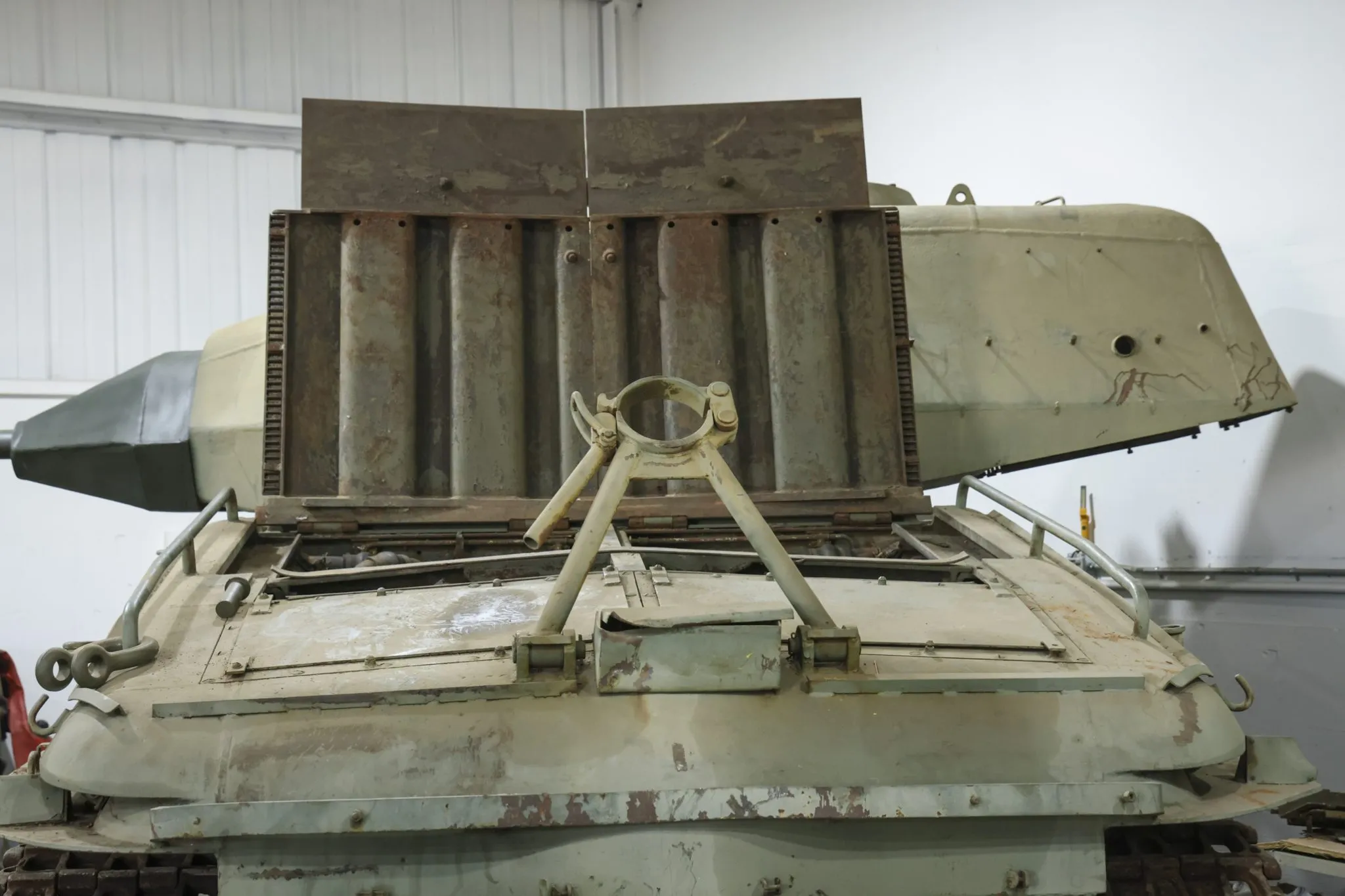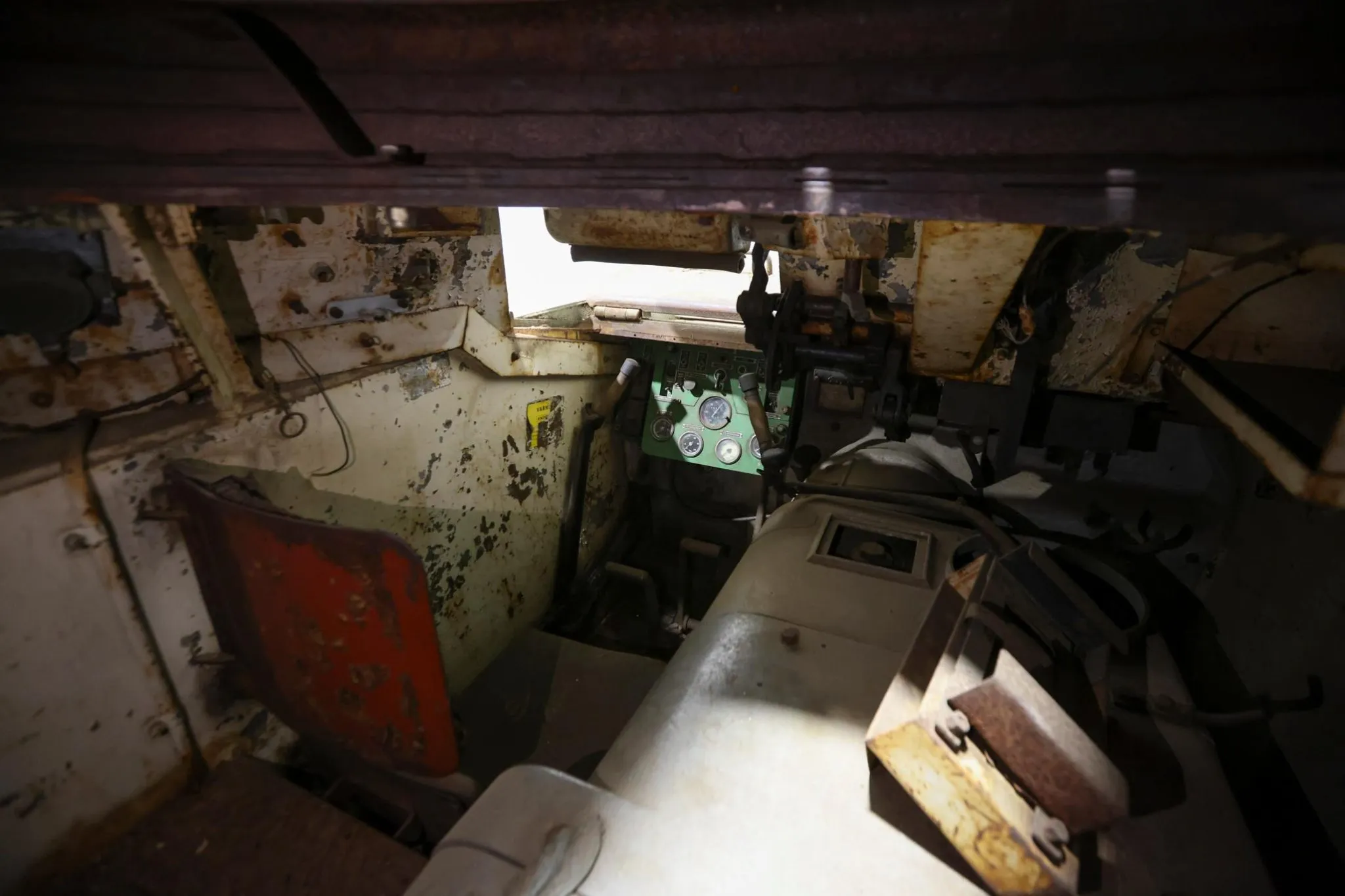This Stridsvagn 74 tank was originally constructed by AB Landsverk in Landskrona, Sweden, in the late 1940s as a Stridsvagn m/42 TV medium tank before being converted into Strv 74 light tank configuration in the late 1950s. The tank is said to have spent over 20 years on display at the American Armored Foundation Museum in Danville, Virginia, before being purchased by the selling dealer in 2024 after the museum’s closure. Currently a non-running project, the tank features twin 8.5-liter Scania-Vabis 607 inline-six gasoline engines that are linked to the tracks via a five-speed manual transmission. The turret remains in place but is absent of a traverse mechanism, gun, mantlet, or commander’s hatch. This Strv 74 is now offered in Taft, California, on a bill of sale.
Development of the Strv 74 began in 1953 to fill the Swedish Army’s need for a light tank to supplement its newly acquired British Centurion main battle tanks. In lieu of a full new design, the Strv 74’s construction incorporated twin-engined Strv m/42 chassis modified to accommodate a larger, more modern turret with a 75mm anti-aircraft gun. Additional alterations to the m/42 platform included tracks widened by 65mm, uprated shock absorbers, and more powerful fuel-injected engines. Approximately 225 Strv 74 tanks were built after production began in 1957, and the model remained in service through 1984.
This example’s hull and turret are finished in matte pale green, and the turret is no longer equipped with its electrically powered traverse. The gun is no longer present, and a steel tube and faux mantlet are instead positioned at the front of the turret. Hull features include dual blast panels designed to shield the grilles from nuclear attack, a headlight housing, and a rear gun lock. Various areas of corrosion are present on the hull, turret, and other equipment.
The cast-steel tracks roll under six road wheels on each side and also utilize idler wheels at the rear of the tank, three rollers each, and ice scrapers behind each sprocket. Suspension is via torsion bars and four shock absorbers per side.
The Strv 74 was designed to house a crew of four, with the driver seated in the front left of the hull. The remaining crew members were to be positioned in the turret, which on this example is empty. The driver’s seat is upholstered in brown leather, which has detached from the back padding.
The driver’s control panel features a single 50-km/h speedometer and separate gauges for each engine monitoring oil pressure and coolant temperature as well as switchgear labeled in Swedish. The five-digit odometer shows 5,200 kilometers (~3,200 miles), and true mileage is unknown. Steering is handled via dual tillers, while additional controls include clutch, brake, and accelerator pedals and a shifter to the driver’s right.
The Scania-Vabis 607 inline-six engines feature overhead valves, liquid cooling, and fuel injection in lieu of the carburetion systems utilized in Strv m/42 applications. Output was rated at 170 horsepower per engine for a total of 340 horsepower. Individual driveshafts link into a single five-speed manual gearbox. The engines have not been started under current ownership, and the selling dealer notes that various ancillaries are not present.

